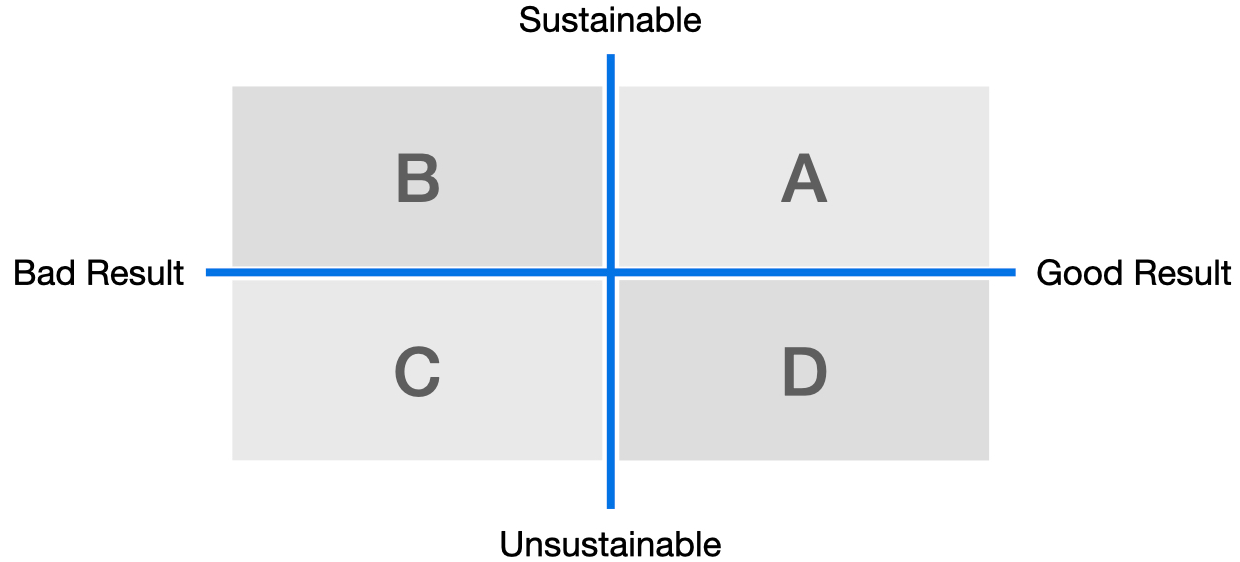A structured retrospective framework for evaluating performance through four clear action categories.
Why This Matters
Many projects drift off course not because of a lack of effort, but because of a lack of reflection. Teams often repeat mistakes or fail to scale what is actually working.
The KISS Review Framework matters because it provides a quick, structured way to evaluate performance. It moves feedback away from vague impressions (“I think we did okay”) toward clear, actionable categories.
What Is the KISS Review Framework
The KISS review framework is a straightforward, easy-to-understand evaluation tool that helps you assess what’s working, what needs improvement, what should be stopped, and what should be started in a project.
KISS stands for:
- Keep
- Improve
- Stop
- Start
One of the great things about the KISS framework is its flexibility—you can apply it at any stage of a project, whether it’s in progress, at the end, or after completion.
Core Concept of the Framework
To better understand the KISS model, think of it in terms of a logical quadrant:

On the X-axis, we have Good/Bad Results, and on the Y-axis, we have Sustainable/Unsustainable.
By combining these, we get the following insights:
Quadrant A: Keep (Sustainable + Good Result)
This represents things you’ve done well. It could be the result of effective methods, good habits, or smart ideas.
The key here is to stick to what works and continue building on these strengths.
Quadrant B: Improve (Sustainable + Bad Result)
Even if you’re on the right path, the results may not be optimal.
Focus on improving processes or tools to make sure you're still headed toward the right goal.
Quadrant C: Stop (Unsustainable + Bad Result)
When something is both unsustainable and leading to bad results, it’s time to stop.
This could involve stopping ineffective methods, breaking bad habits, or addressing behaviors that are harming progress.
Quadrant D: Start (Unsustainable + Good Result)
If you’ve identified actions that contribute to success but haven’t started them yet, this is where "Start" comes into play.
Begin implementing these actions to build on your successes.
Benefits
- Action-Oriented: It doesn't just list problems; it categorizes them into specific behaviors (Stop vs. Improve).
- Balanced View: It forces teams to look at positives (Keep) as well as negatives (Stop).
- Simplicity: It requires no training to understand, making it accessible for all stakeholders.
KISS vs. GRAI
So, how does KISS differ from GRAI?
GRAI emphasizes more on the process of problem/opportunity identification, and KISS emphasizes more on the structural expression of the result, which points to the I(Insight) in GRAI.
In other words, when you come up with a set of actions after conducting GRAI assessment, you can then classify the actions according to the guidance of KISS, and the summarized conclusions will be much clearer and more explicit.
These two models complement each other well.
However, if your goals and results are already clear, you can jump straight into KISS to summarize your actions without needing to go through GRAI.
When to Use the KISS Review Framework
When to Use
- Sprint Retrospectives: Use KISS to reflect on team habits and outcomes at the end of each sprint.
- Project Post-Mortems: Apply it after delivery to capture lessons and define concrete follow-up actions.
- Quarterly Business Reviews: Use KISS to align execution decisions with strategic priorities.
- 1:1 Feedback: Structure feedback conversations around actions to reinforce or change.
Takeaway
KISS works because it forces clarity.
Instead of debating feelings or intentions, it asks teams to decide what should continue and what should change.
Its strength lies in action, not analysis.
KISS does not explain why something happened, but it makes the next step explicit.
Used regularly, the framework turns reflection into a habit rather than an event.





